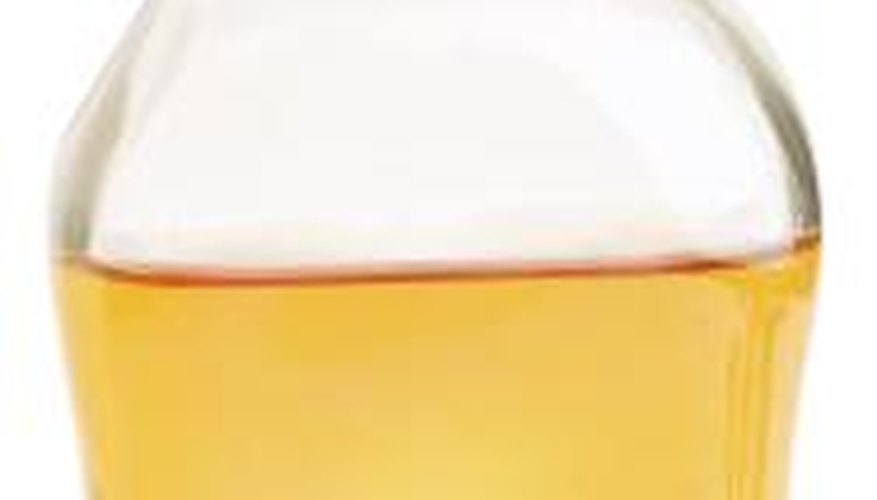If you've inherited or come across a bottle of spirits and you are unsure of the age, you can narrow the date of the bottle by a few key clues. If you are unable to determine the age of the bottle from a label or otherwise, you can look for other clues to estimate its age. Unlike wine, spirits and high-proof whiskeys and liquors do not age once they are bottled.
- If you've inherited or come across a bottle of spirits and you are unsure of the age, you can narrow the date of the bottle by a few key clues.
- If you are unable to determine the age of the bottle from a label or otherwise, you can look for other clues to estimate its age.
Check the bottom of the bottle for any indications of the year. Many distillers use bottles that are stamped with a two-digit number indicating the year that they were made.
Look on the bottle for a government warning printed on the label. If you cannot find one, then your bottle was distilled before 1989, which was the year when the Surgeon General's warning became mandatory.
Narrow the age of your bottle down by looking for a tax stamp. These are thin strips of paper that go over the top of the bottle to indicate the tax had been paid. These stamps were mandatory before 1985 before bar code inventory methods replaced the need for the stamp. They generally say "Bottled in Bond" and are green in colour.
- Narrow the age of your bottle down by looking for a tax stamp.
- These are thin strips of paper that go over the top of the bottle to indicate the tax had been paid.
Check the measurement of a bottle. If it is non-metric, then it is pre-1970s. If it has both metric and standard English measurements, then it is from the late 70s. Anything after 1980 will be strictly metric. For example, before 1970, a bottle will read "18 fluid oz." During the transitional time of the 70s and early 80s it would read "18 fluid oz/.53 litres." After 1980, it would simply state ".5 litres."
Research the brand. If you can determine that the brand has been discontinued, then you can roughly date it by the time that it was last bottled. Discontinued brands of whiskey and other spirits are worth more than other spirits since they are a special blend that cannot be repeated.
Look for the raised letters on the bottle that say, "Federal Law Prohibits the Resale or Reuse of this Bottle." This will date your bottle between 1932 and 1964, when federal law required all bottle manufacturers to have this wording in their moulds.
Browse the web for specific pages on your particular brand of alcohol. Collectors of brands such as Dwyers', Crown Royal, and American whiskeys such as Jack Daniels will have detailed pages that can help you decipher particular bottle marks and the dates associated with them.
- If you can determine that the brand has been discontinued, then you can roughly date it by the time that it was last bottled.
- Collectors of brands such as Dwyers', Crown Royal, and American whiskeys such as Jack Daniels will have detailed pages that can help you decipher particular bottle marks and the dates associated with them.
TIP
A bottle of discontinued alcohol of any type is worth roughly twice that of modern bottled distilled alcohol because a spirit with a high alcohol content does not age once it has left the barrels and is bottled.
WARNING
If you have a sun-faded label, keep in mind that the taste will be considerably altered. List this exposure if you are looking to sell your bottle as the collector will notice the change in flavour. Sun exposure will considerably affect the value of your alcohol.
